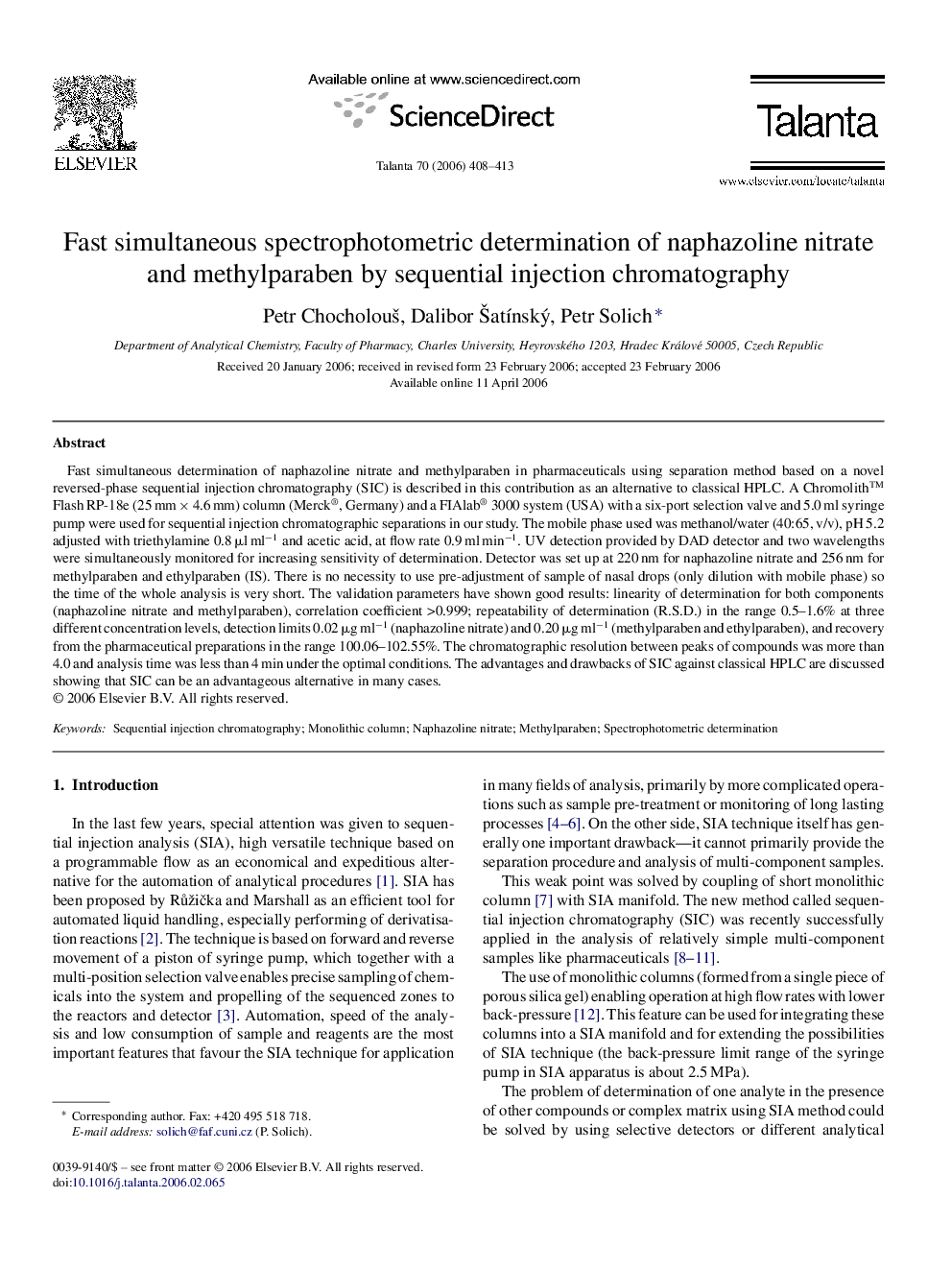| Article ID | Journal | Published Year | Pages | File Type |
|---|---|---|---|---|
| 1246472 | Talanta | 2006 | 6 Pages |
Fast simultaneous determination of naphazoline nitrate and methylparaben in pharmaceuticals using separation method based on a novel reversed-phase sequential injection chromatography (SIC) is described in this contribution as an alternative to classical HPLC. A Chromolith™ Flash RP-18e (25 mm × 4.6 mm) column (Merck®, Germany) and a FIAlab® 3000 system (USA) with a six-port selection valve and 5.0 ml syringe pump were used for sequential injection chromatographic separations in our study. The mobile phase used was methanol/water (40:65, v/v), pH 5.2 adjusted with triethylamine 0.8 μl ml−1 and acetic acid, at flow rate 0.9 ml min−1. UV detection provided by DAD detector and two wavelengths were simultaneously monitored for increasing sensitivity of determination. Detector was set up at 220 nm for naphazoline nitrate and 256 nm for methylparaben and ethylparaben (IS). There is no necessity to use pre-adjustment of sample of nasal drops (only dilution with mobile phase) so the time of the whole analysis is very short. The validation parameters have shown good results: linearity of determination for both components (naphazoline nitrate and methylparaben), correlation coefficient >0.999; repeatability of determination (R.S.D.) in the range 0.5–1.6% at three different concentration levels, detection limits 0.02 μg ml−1 (naphazoline nitrate) and 0.20 μg ml−1 (methylparaben and ethylparaben), and recovery from the pharmaceutical preparations in the range 100.06–102.55%. The chromatographic resolution between peaks of compounds was more than 4.0 and analysis time was less than 4 min under the optimal conditions. The advantages and drawbacks of SIC against classical HPLC are discussed showing that SIC can be an advantageous alternative in many cases.
